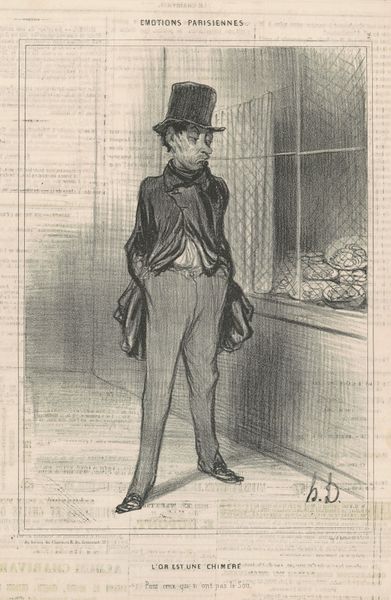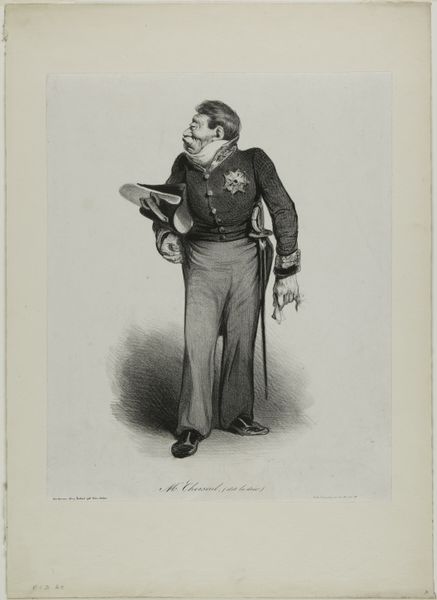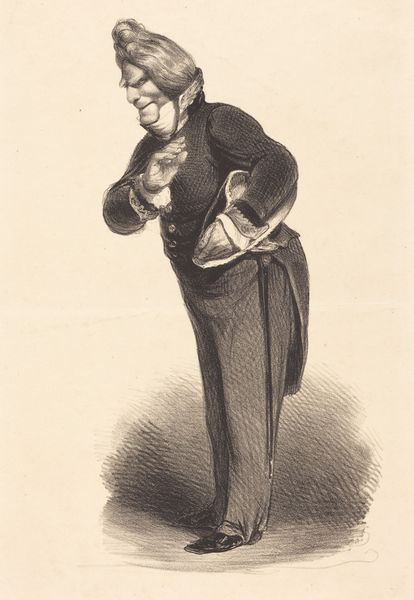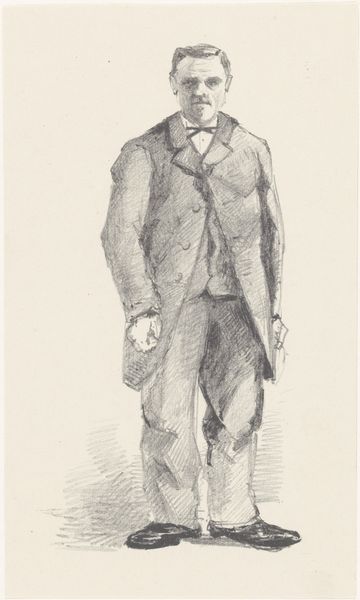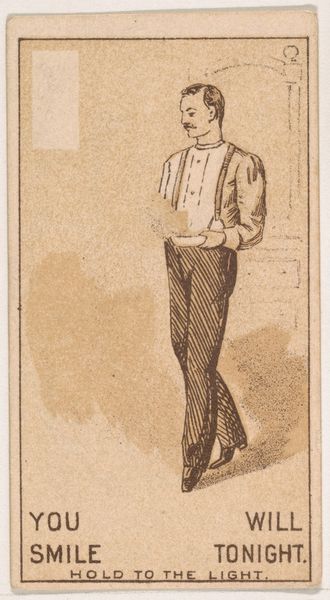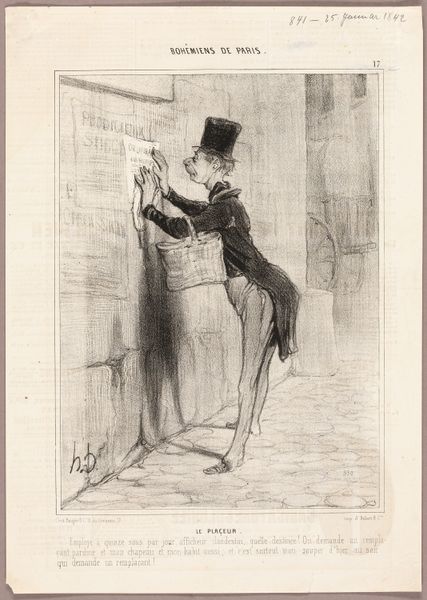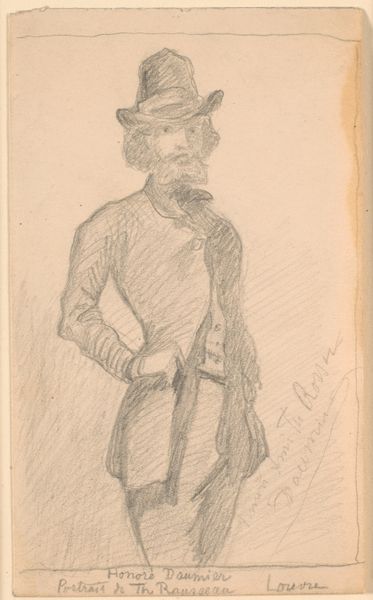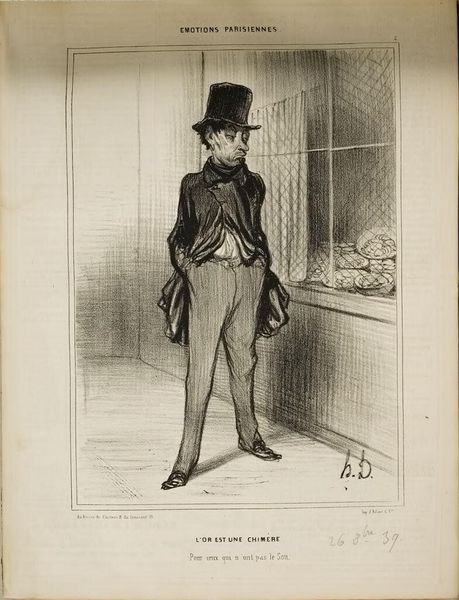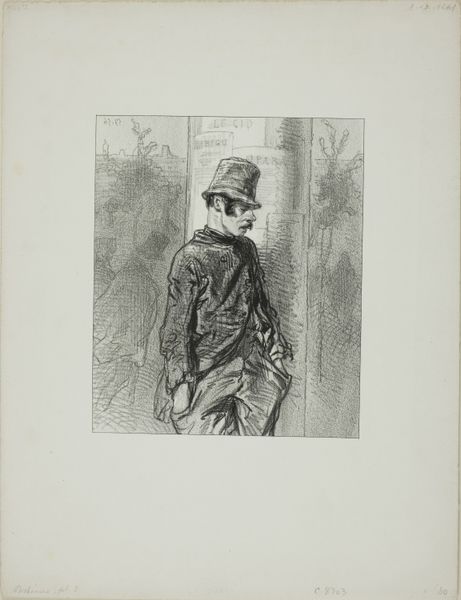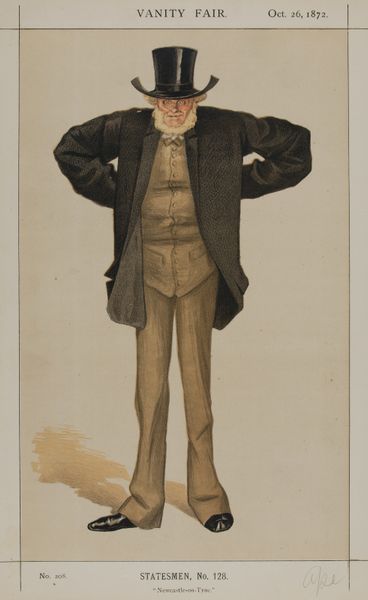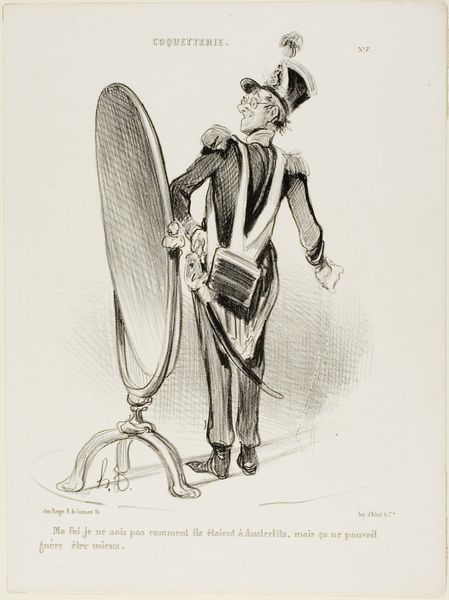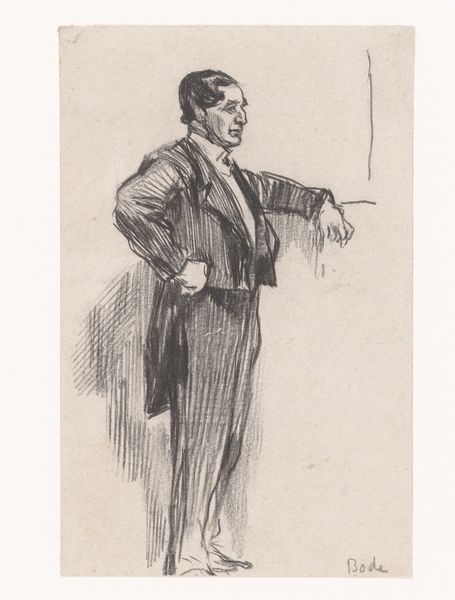
#
pencil drawn
#
photo restoration
#
pencil sketch
#
old engraving style
#
retro 'vintage design
#
archive photography
#
historical photography
#
old-timey
#
19th century
#
pencil work
Dimensions: height 320 mm, width 235 mm
Copyright: Rijks Museum: Open Domain
Curator: The piece before us is a lithograph from 1889 entitled "Portret van Cornelis Hartsen." Editor: Oh, this is striking! It has such a vintage, almost haunting feel to it. The contrasts created by the lithographic process give it this shadowy effect, right? Curator: Indeed. Cornelis Hartsen, the subject, was Minister of Foreign Affairs. This print comes from "De Lantaarn," a satirical magazine of the period. Political caricature was, as you might expect, quite popular. Editor: So it’s clearly intended to be satirical! I mean, look at the figure’s elongated proportions, especially his head. It's a deliberate exaggeration, like he’s consumed by his intellect or… ego, perhaps? Curator: Very perceptive! "De Lantaarn" often used visual satire to critique the political figures of the day, and the way Hartsen is depicted here undoubtedly speaks to public perceptions of his character and policies. The caption says, "De Minister van Buitenlandsche Zaken", underscoring that point. Editor: You know, focusing on the formal aspects, notice the subtle variations in line thickness and texture. That achieves depth, especially in the rendering of his formal wear, even though it's a relatively simple composition. It uses graphic economy to amplify his stature. Curator: Yes, the artist definitely leverages the medium to enhance the commentary. The exaggerated features paired with his formal attire creates a deliberate juxtaposition. He seems caught between embodying the power of his office, and the artist highlighting his perceived absurdities or weaknesses through the visual commentary. It speaks volumes about the relationship between public figures and the press. Editor: Absolutely! Even without knowing the specifics of the political climate, the visual cues – the exaggerated features, the carefully considered contrasts – signal satire. It's a pretty potent commentary with relatively minimal detail. The lithographer wants the viewer to draw strong conclusions! Curator: And understanding its placement in "De Lantaarn", situates it within the context of late 19th century political discourse and freedom of the press, both being fiercely debated then. Art served as a tool for public engagement and the circulation of opinions in print media. Editor: It’s remarkable how relevant the visual strategies still are today! Anyway, it's a fascinating example of how the intrinsic design of an artwork is intertwined with sociopolitical considerations. Curator: Agreed! A true time capsule of an era, viewed from many angles.
Comments
No comments
Be the first to comment and join the conversation on the ultimate creative platform.

